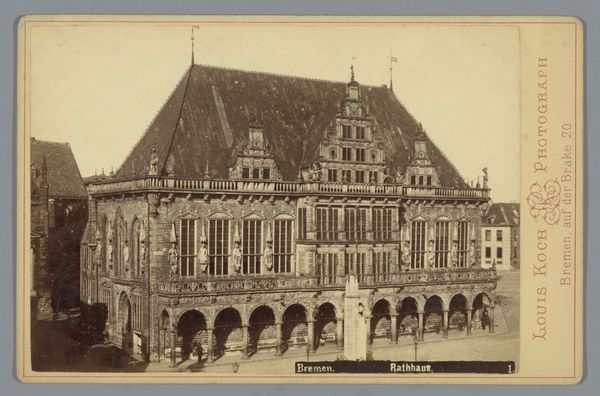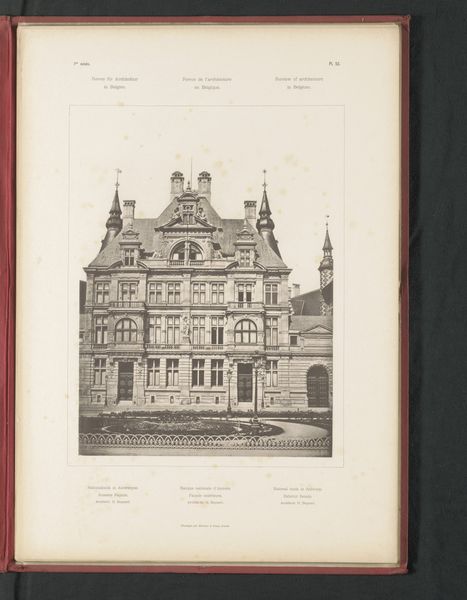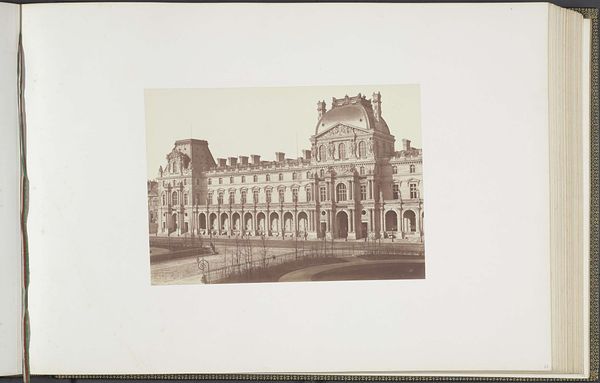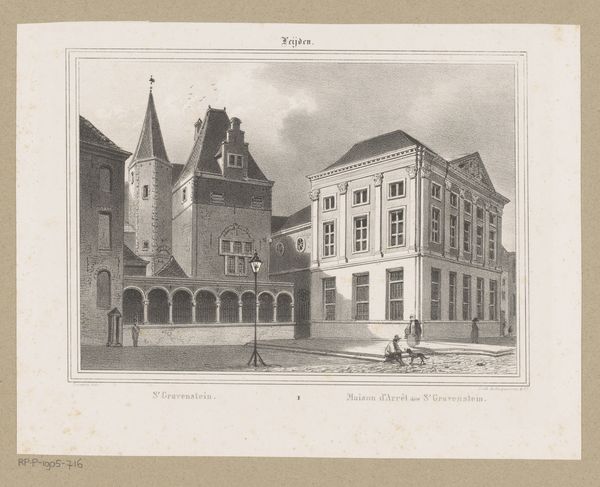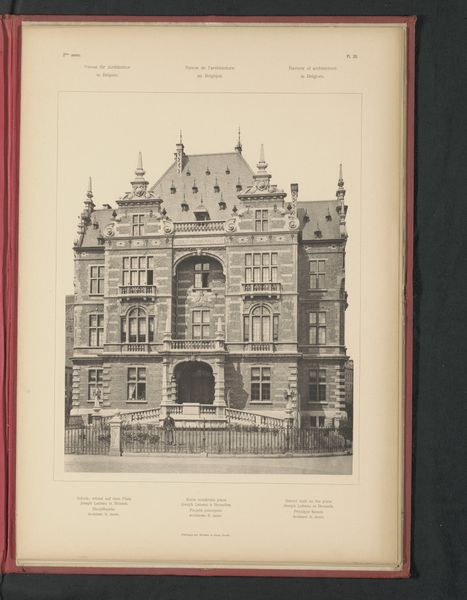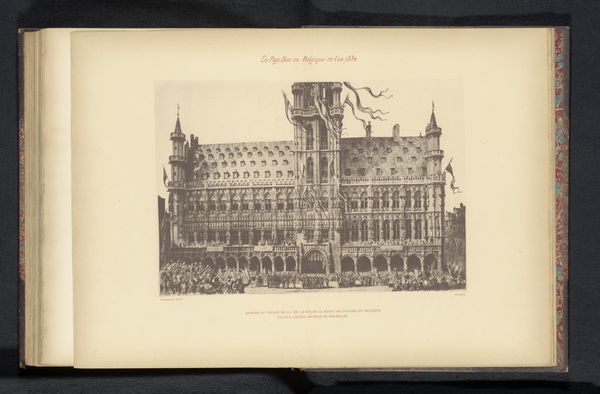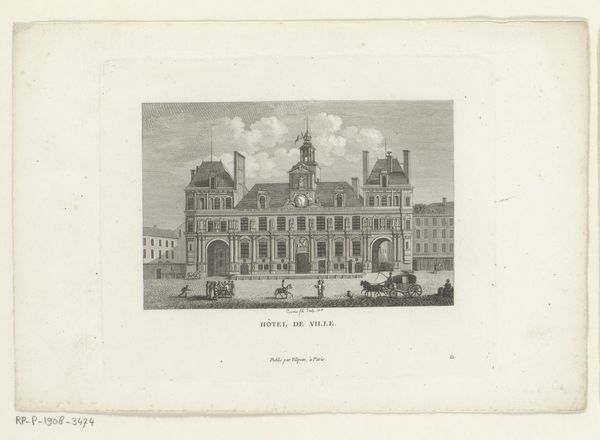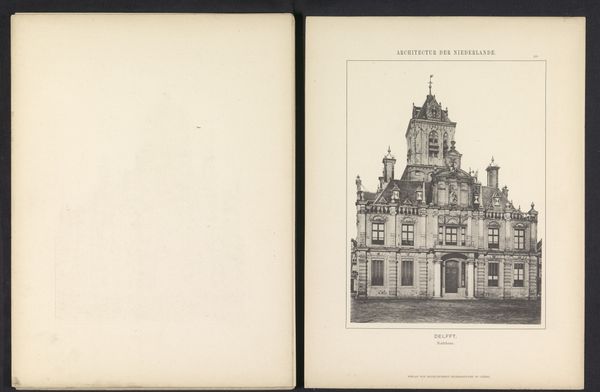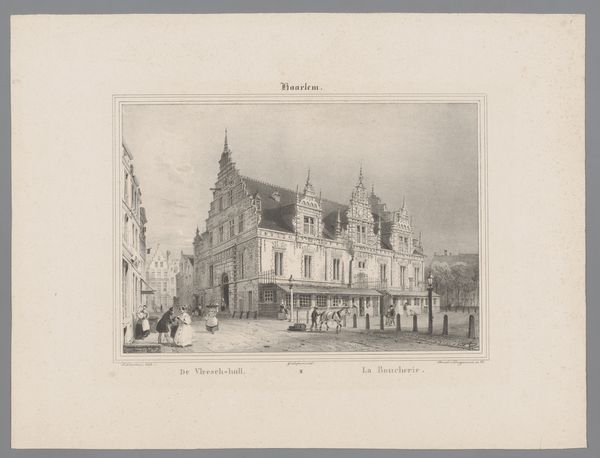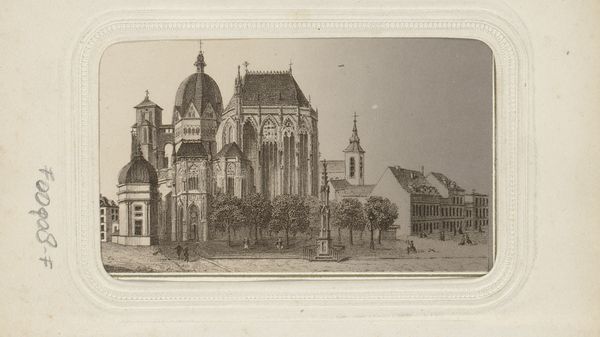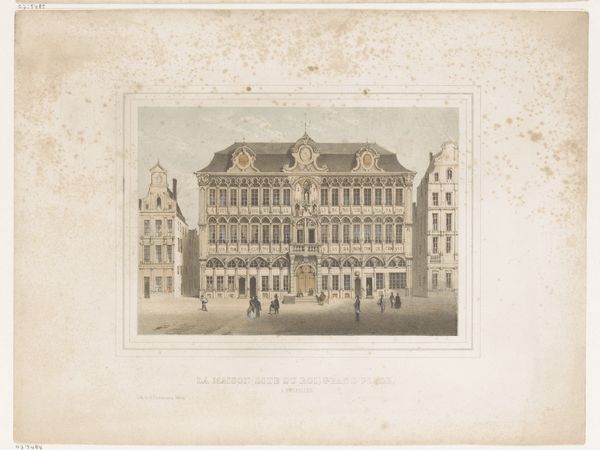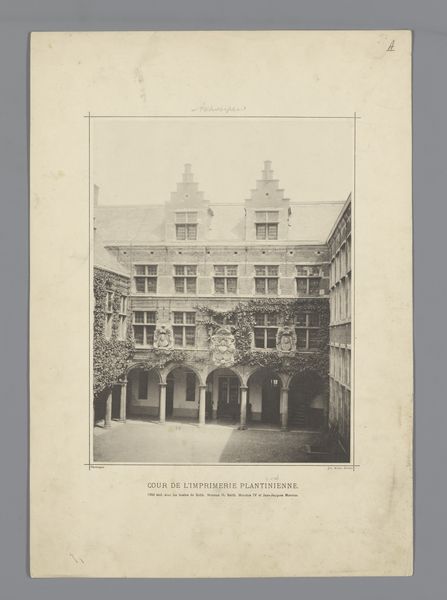
print, engraving
#
neoclacissism
#
aged paper
# print
#
old engraving style
#
sketch book
#
personal sketchbook
#
script
#
cityscape
#
engraving
#
historical font
#
building
Dimensions: height 169 mm, width 214 mm
Copyright: Rijks Museum: Open Domain
Curator: This engraving, titled "Gevel van het stadhuis van Bremen," offers a detailed view of the Bremen City Hall facade. It was created before 1841 by Johann Hürlimann, capturing the architectural grandeur of the time. The neo-classical style building looms large in the print. What's your initial take? Editor: It has such a static, almost melancholic presence, doesn’t it? The grey tones add to a sense of stillness and past glories. The precise lines speak to meticulous workmanship but also, perhaps, a rigid social structure. I immediately begin thinking of the material conditions of the buildings and how it must have dominated the urban labor scene. Curator: Absolutely. Consider also what buildings like this represent: power, governance, and the enforcement of social norms. And it is important to note the almost exclusively male figures within. Editor: I'm drawn to the process of engraving itself. Think of the hours of labor invested to translate the architectural detail onto the plate. Who were the artisans, and what were their lives like as they reproduced an emblem of burgher power? It becomes more than just representation. Curator: Precisely. It’s about the consumption of visual rhetoric and how we position ourselves when confronted with an authoritative structure. The Hall has undergone multiple changes reflecting differing social and political climates, making it necessary to think of it as fluid instead of concrete. Editor: This connects back to the labor invested and the sheer volume of natural resources that made it. This speaks volumes to who benefitted. Looking closely, the aged paper enhances that sense of history etched physically into the image. It's a layered materiality, the building itself, then the print materials speaking about the building. Curator: By acknowledging how systems and processes influence perception, it gives us an expanded view that pushes against static viewpoints to really dissect the cultural and artistic impacts of our history. Editor: Indeed. To approach it from a means of production provides more insight on social consumption that makes this building a sign of its time and not simply an artistic reproduction of the City Hall of Bremen. Curator: It pushes us beyond merely viewing art and empowers viewers to question and connect with societal fabrics. Editor: Yes, from building to print, we see how something designed and created gains multiple social layers.
Comments
No comments
Be the first to comment and join the conversation on the ultimate creative platform.
